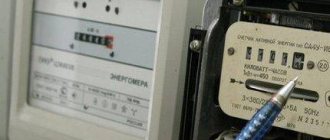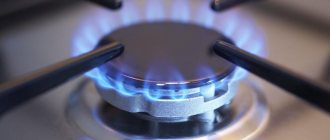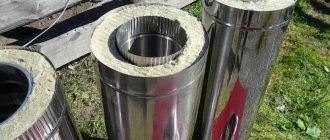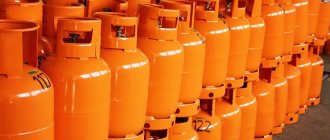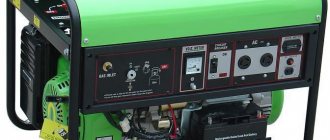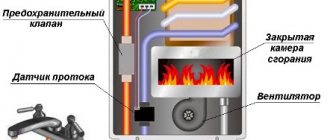Due to its high efficiency and low fuel consumption, gas equipment has become widespread among the population. But for all its advantages, unfortunately, blue fuel can actually be dangerous if used incorrectly. Explosions, fires, poisoning and suffocation - these are the dangers that a 5 percent concentration of household gas in the air can cause.
In this article we will tell you what methods you can use to check for gas leaks at home, and how to avoid a tragedy.
How to choose gas equipment
He must have instructions, and the person installing the device must give you a document certifying that the work was carried out in accordance with technical standards and safety rules.
Flexible hoses should be as short as possible (no more than 2 m) and tightly fitted to the tap. The maximum service life of a flexible hose is four years, but it is best to replace it every two years.
The hose clamp should provide a complete seal, but do not try to clamp it too tightly - this may cause the hose to break and cause a gas leak. It is important that constant ventilation is provided in the room. Do not plug the ventilation openings even in winter.
Earlier, the Minister of Housing and Communal Services of the Sverdlovsk Region, Nikolai Smirnov, said that Russia needs a legislative norm that would oblige homeowners to provide gas service employees with access to equipment during scheduled and unscheduled inspections.
According to Ekaterinburggaz, in 2021 the organization’s specialists were unable to gain access to 6.5 thousand apartments and 200 private houses - slightly more than 1.5% of the total number of consumers. Crews inspect equipment — boilers, heaters and ranges — annually.
Main news on the topic
Causes of gas leaks
In most cases, the danger of a gas leak arises from improper operation of gas appliances and neglect of basic safety rules. In addition, the following reasons are possible:
- carrying out independent gas-hazardous work, without coordination with the regulatory organization;
- illegal activities of false specialists who do not have permission to carry out such work;
- failure to comply with the manufacturer's recommendations when installing gas equipment;
- banal wear and tear of the gas pipeline, destruction of its walls by corrosion;
- poor-quality welding, rupture of welding seams;
- problem with flexible connections (gas hoses) - ruptures and damage;
- problem with the tightness of connections, wear of threaded connections or o-rings;
- loose closure of the gas tap or burner;
- the flame went out while the stove was on (water was spilled, there was a draft, or the burner was simply dirty);
- the gas device is faulty.
Thus, gas leaks are most often caused by wear and tear of materials or improper operation of devices included in the VDGO and VKGO systems.
The nozzle is clogged with dirt
Another popular reason why one or all burners do not light is a nozzle clogged with dirt. It is a small nozzle through which gas is supplied. To clean it, you should follow strict recommendations so as not to worsen the situation and not expose yourself to danger:
- remove the burner and clean it if necessary;
- we find a small hole - a nozzle;
- Using a needle, a straightened paper clip, or wire, carefully clean it and turn the tool in one direction or the other. The item used must pass through the channel without obstruction! If there is an obstacle, be sure to contact the appropriate service, do not break through it yourself;
- We assemble the burner and check the operation.
You cannot run gas directly through a nozzle that is not covered with a disk - a burner!
Systematically clean the stove thoroughly, making sure that dirt does not collect on the surface. is the best preventive measure in such a situation.
Why does the smell appear?
There are several main reasons for this phenomenon.
The first and most basic is leakage. If propane leaks through the hose and the places where the hose is attached to the riser or stove, you can check this by applying a soapy solution to the hose. However, this procedure is not sufficient, because micropores may not be noticed. Sometimes the leakage can come from the burner taps. The master, checking this assumption, will simply turn off the corresponding taps. There are other equally rare problems that cause similar phenomena, for example:
- gasket wear;
- loosening the hose nut;
- no grease on the valve plug;
- weakening of the tap gasket;
- gas valve defect;
- violation of the operation of the device, in the absence of a gas control system;
- malfunction of the burner, which can appear either as a result of a hidden manufacturing defect or due to natural wear and tear;
- unprofessional installation and incorrect settings.
Most faults can be eliminated by replacing the failed part or gasket. But despite the absence of the need for complex technical repairs, such work should be performed by a service center specialist.
What to do if a gas leak is detected
So, if you find a leak or have any suspicion of it, you must strictly follow the following instructions:
- turn off all gas appliances and turn off the tap on the gas pipeline;
- open all windows to ventilate the room;
- do not light a fire or use electrical appliances, so as not to provoke an explosion;
- leave the gas-polluted room and notify your neighbors about the problem;
- outside the premises, call the emergency service (by phone 04 or 104) and wait for specialists to arrive.
Under no circumstances try to fix the problem yourself; be sure to contact a specialist.
If the gas catches fire, do not extinguish it yourself! It won't explode while it's burning. Leave the premises and call rescuers!


